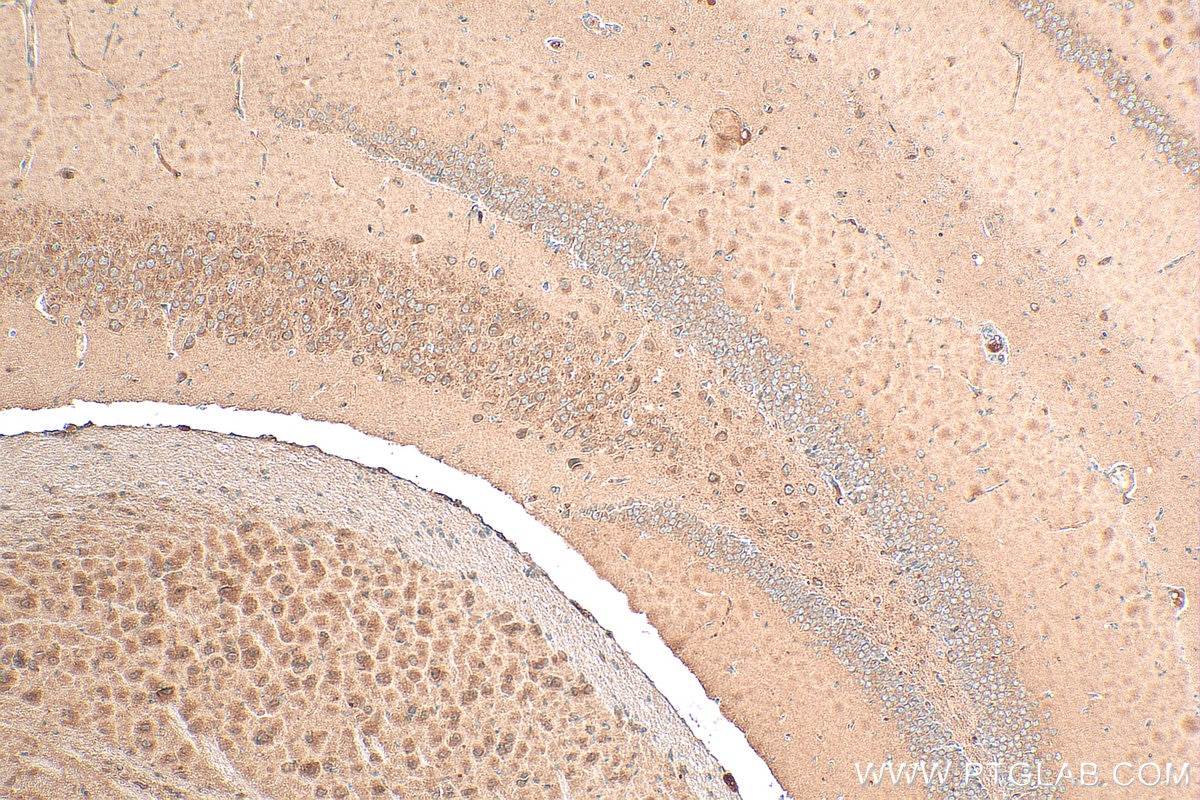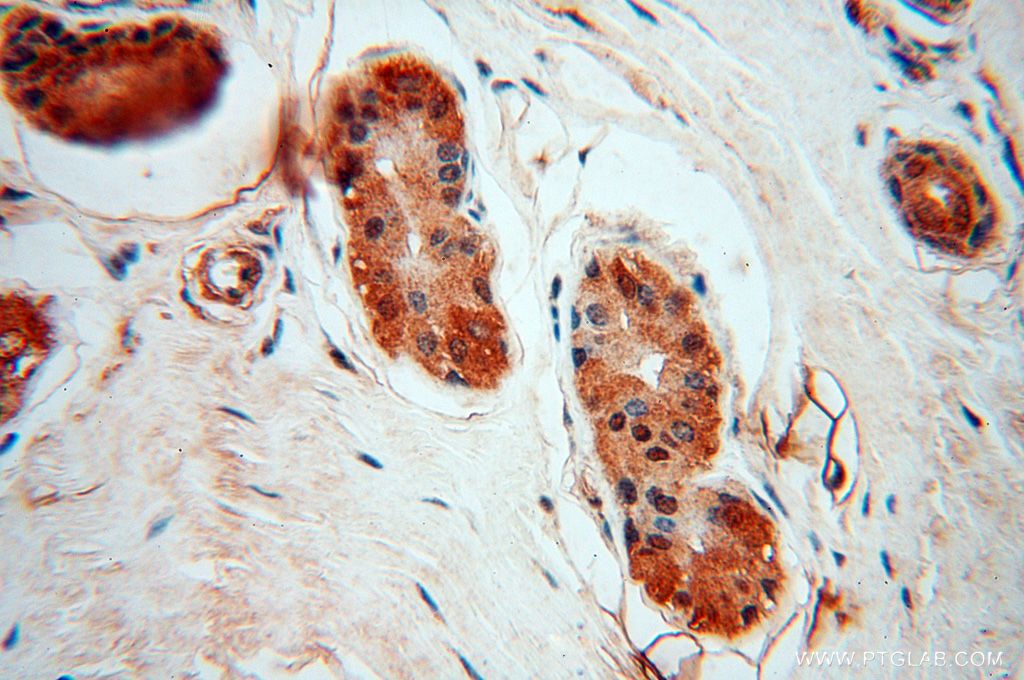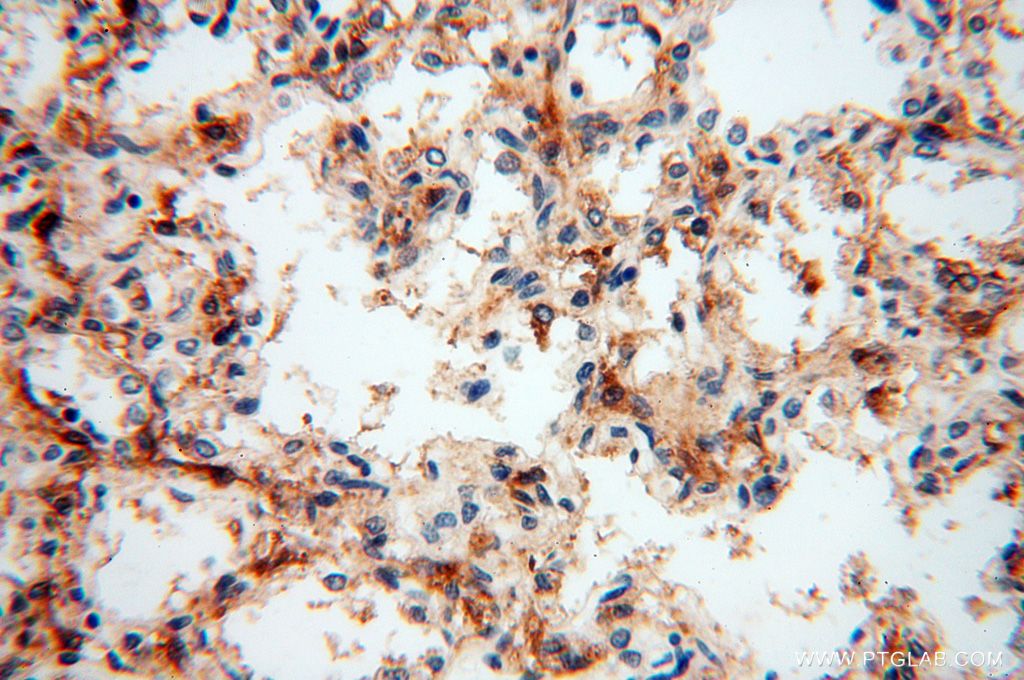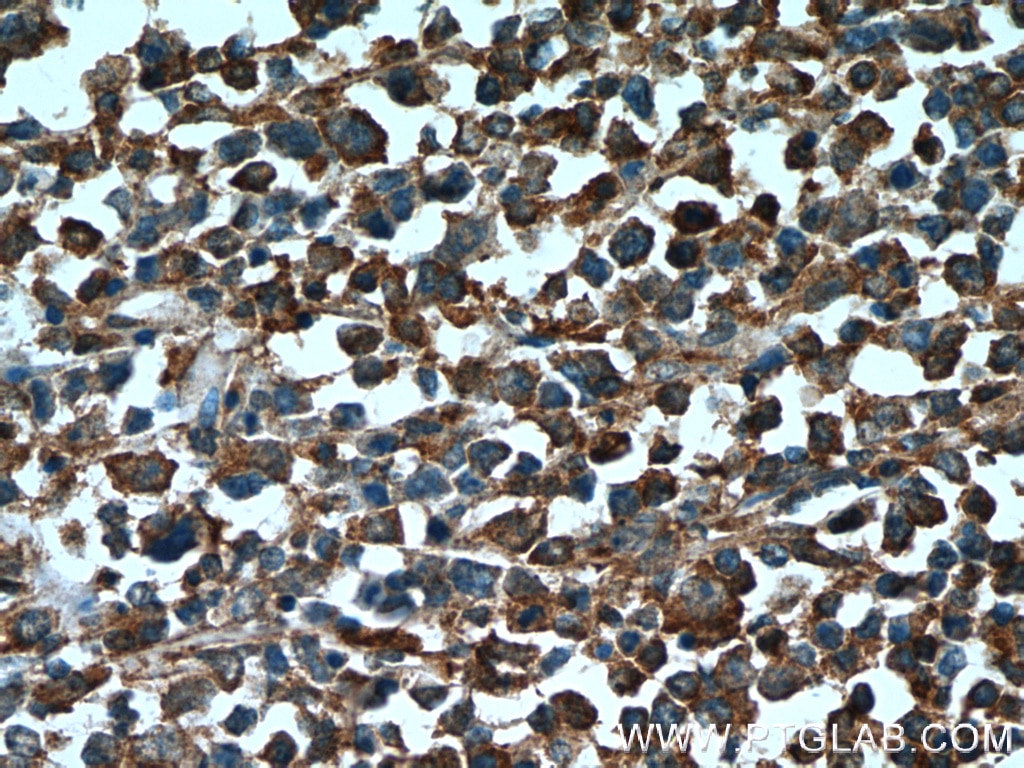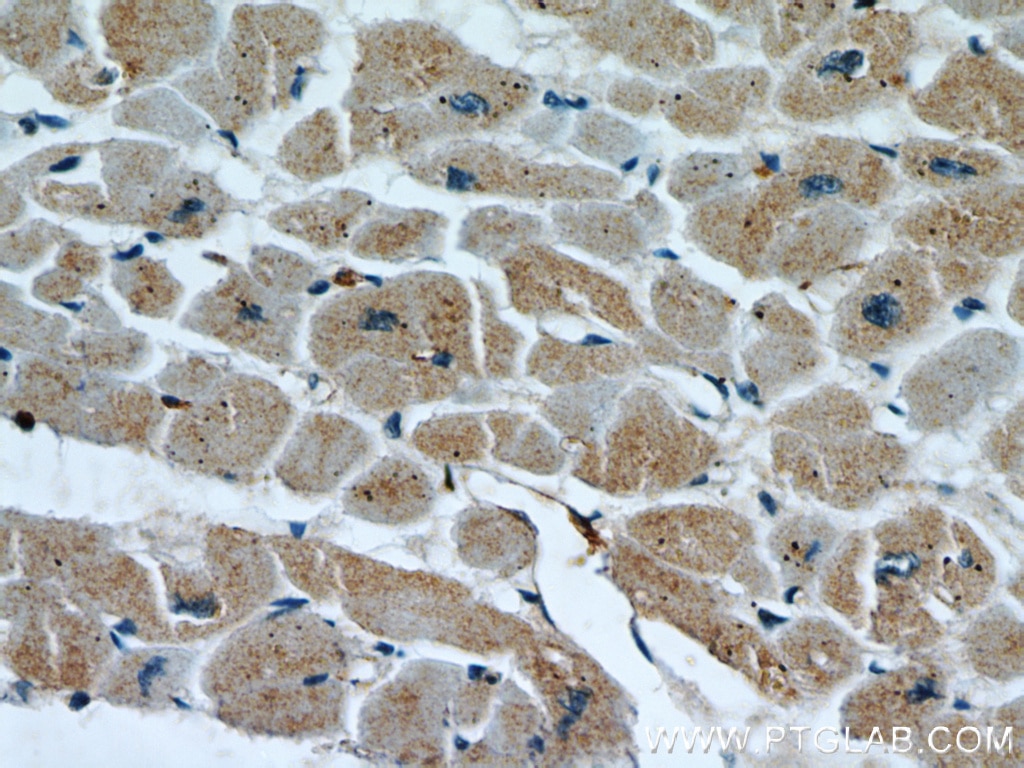Validation Data Gallery
Tested Applications
| Positive WB detected in | Raji cells, THP-1 cells |
| Positive IP detected in | MCF-7 cells |
| Positive IHC detected in | mouse brain tissue, human heart tissue, human kidney tissue, human lung tissue, human lymphoma tissue, human ovary tissue, human skin tissue Note: suggested antigen retrieval with TE buffer pH 9.0; (*) Alternatively, antigen retrieval may be performed with citrate buffer pH 6.0 |
| Positive IF/ICC detected in | THP-1 cells |
Recommended dilution
| Application | Dilution |
|---|---|
| Western Blot (WB) | WB : 1:2000-1:12000 |
| Immunoprecipitation (IP) | IP : 0.5-4.0 ug for 1.0-3.0 mg of total protein lysate |
| Immunohistochemistry (IHC) | IHC : 1:250-1:1000 |
| Immunofluorescence (IF)/ICC | IF/ICC : 1:200-1:800 |
| It is recommended that this reagent should be titrated in each testing system to obtain optimal results. | |
| Sample-dependent, Check data in validation data gallery. | |
Published Applications
| KD/KO | See 4 publications below |
| WB | See 6 publications below |
| IHC | See 1 publications below |
| IF | See 2 publications below |
Product Information
17535-1-AP targets PARP9 in WB, IHC, IF/ICC, IP, ELISA applications and shows reactivity with human, rat samples.
| Tested Reactivity | human, rat |
| Cited Reactivity | human, treeshrew |
| Host / Isotype | Rabbit / IgG |
| Class | Polyclonal |
| Type | Antibody |
| Immunogen |
CatNo: Ag11587 Product name: Recombinant human PARP9 protein Source: e coli.-derived, PGEX-4T Tag: GST Domain: 476-819 aa of BC039580 Sequence: EARSPAINLMGFNVEEMYEAHAWIQRILSLQNHHIIENNHILYLGRKEHDILSQLQKTSSVSITEIISPGRTELEIEGARADLIEVVMNIEDMLCKVQEEMARKKERGLWRSLGQWTIQQQKTQDEMKENIIFLKCPVPPTQELLDQKKQFEKCGLQVLKVEKIDNEVLMAAFQRKKKMMEEKLHRQPVSHRLFQQVPYQFCNVVCRVGFQRMYSTPCDPKYGAGIYFTKNLKNLAEKAKKISAADKLIYVFEAEVLTGFFCQGHPLNIVPPPLSPGAIDGHDSVVDNVSSPETFVIFSGMQAIPQYLWTCTQEYVQSQDYSSGPMRPFAQHPWRGFASGSPVD 相同性解析による交差性が予測される生物種 |
| Full Name | poly (ADP-ribose) polymerase family, member 9 |
| Calculated molecular weight | 819 aa, 92 kDa |
| Observed molecular weight | 88 kDa |
| GenBank accession number | BC039580 |
| Gene Symbol | PARP9 |
| Gene ID (NCBI) | 83666 |
| RRID | AB_2158929 |
| Conjugate | Unconjugated |
| Form | |
| Form | Liquid |
| Purification Method | Antigen affinity purification |
| UNIPROT ID | Q8IXQ6 |
| Storage Buffer | PBS with 0.02% sodium azide and 50% glycerol{{ptg:BufferTemp}}7.3 |
| Storage Conditions | Store at -20°C. Stable for one year after shipment. Aliquoting is unnecessary for -20oC storage. |
Background Information
Poly(ADP-ribosyl)ation is a post-translational modification of proteins mediated by one of the 17 members of the poly(ADP-ribose) polymerases (PARP). PARP-9 belongs to the subfamily of macroPARPs, associating one to three macro domains to the PARP domain. Overexpression of PARP-9 stimulates cell migration in vitro, suggesting a role for PARP-9 in the promotion of malignant B cell migration and dissemination in high risk DLBCL. PARP-9 is also likely a transcription coactivator, its overexpression in B lymphocytes, stimulated by IFNγ, inducing the transcription of IFNγ-controlled genes.
Protocols
| Product Specific Protocols | |
|---|---|
| IF protocol for PARP9 antibody 17535-1-AP | Download protocol |
| IHC protocol for PARP9 antibody 17535-1-AP | Download protocol |
| IP protocol for PARP9 antibody 17535-1-AP | Download protocol |
| WB protocol for PARP9 antibody 17535-1-AP | Download protocol |
| Standard Protocols | |
|---|---|
| Click here to view our Standard Protocols |
Publications
| Species | Application | Title |
|---|---|---|
J Immunol An Alternative Splicing of Tupaia STING Modulated Anti-RNA Virus Responses by Targeting MDA5-LGP2 and IRF3.
| ||
J Biol Chem Patient-derived organotypic tissue cultures as a platform to evaluate metabolic reprogramming in breast cancer patients | ||
Oncol Lett PARP9 is overexpressed in human breast cancer and promotes cancer cell migration.
| ||
J Mol Biol KH-like domains in PARP9/DTX3L and PARP14 coordinate protein-protein interactions to promote cancer cell survival
|




